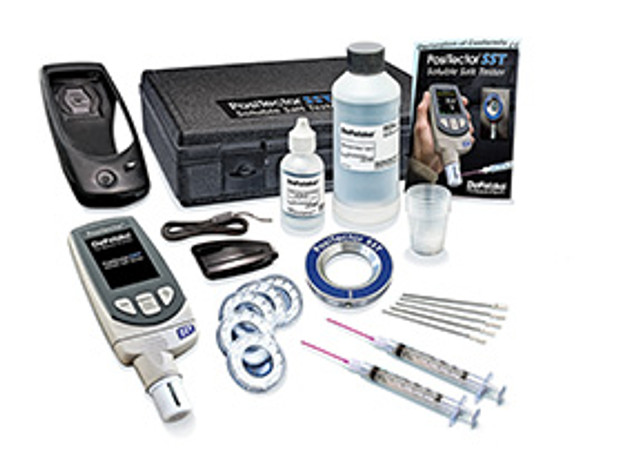

Ultrasonic Thickness Gage
$875.00
- Description
- Additional information
- Reviews (0)
Description
Ultrasonic Wall Thickness Gauges
Ultrasonic Wall Thickness Gauges (ultrasonic thickness gauges, ultrasonic thickness testers, ultrasonic thickness meters, UT gauges, etc.) measure the wall thickness of materials such as steel, plastic, and more using ultrasonic technology. Ultrasonic Thickness Gauges are ideal for measuring the effects of corrosion or erosion on tanks, pipes, or any structure where access is limited to one side. Multiple echo Thru-Paint models (UTG M) measure the metal thickness of a painted structure without having to remove the coating.
What is Ultrasonic Thickness Measurement?
Ultrasonic thickness measurement techniques are used to measure a wide range of substrates and applications for loss of material thickness due to corrosion or erosion. Ultrasonic Thickness Gauges are designed for measuring the thickness of metallic (cast iron, steel, and aluminum) and non-metallic (ceramics, plastics, and glass) substrates and any other ultrasonic wave-conductor provided it has relatively parallel top and bottom surfaces.
An ultrasonic thickness gauge facilitates rapid inspection of the thickness of large metallic structures at small measurement intervals, providing a high-detail thickness map of a scanned surface. When access is only available from one side of the substrate, ultrasonic wall thickness measurement is the most efficient way to monitor the effects of erosion or corrosion and is instrumental to both quality assurance and quality control.
Ultrasonic Thickness Gauges – Corrosion
PosiTector UTG C Series
Corrosion probes measure the wall thickness of materials such as steel, plastic, and more. Ultrasonic Thickness Gauges are ideal for measuring the effects of corrosion or erosion on tanks, pipes, or any structure where access is limited to one side.
- 5 MHz dual element transducer
- Our most ultrasonic thickness popular probes for measuring the effects of corrosion on steel substrates
- Select from cabled, integral, and Xtreme probes
Thru-Paint UT Thickness Gauge
PosiTector UTG M
Ultrasonic Thickness Tester features Thru-Paint capability to quickly and accurately measure the metal thickness of a painted structure without having to remove the coating. Also ideal for measuring blasted materials and other applications requiring a more durable wear face.
- 5 MHz contact probe with wear resistant alumina probe tip and cabled probe
- Multiple-Echo technique averages 3 or more echoes for accurate and reliable readings
- Toggle between Single and Multiple-Echo modes
- Multiple Echo mode eliminates coating thickness
- Single Echo mode detects pits/flaws and increases measurement range

Ultrasonic Thickness Gauge – Cast Iron
PosiTector UTG CLF
Low frequency ultrasonic thickness probes measures the wall thickness of attenuative materials such as cast/ductile iron, cast aluminum, and cast zinc.
- Low frequency 2.25 MHz dual element transducer with cabled probe
- Proprietary algorithm distinguishes back wall reflections from grain noise (reflections) found in cast materials
- Ideal for measuring attenuative materials such as cast iron

Precision UT Thickness Gauge
PosiTector UTG P
Precision Ultrasonic Thickness Meters are designed for high resolution measurements and thin materials including metals and plastics. Automatic Multi-Echo mode ensures the best accuracy on thin metals.
- 15 MHz Single element delay line with cabled probe
- Automatic single-echo or multiple-echo mode depending on material thickness
- Automatic probe tip temperature compensation
- Ideal for thru-paint applications to quickly and accurately measure the metal thickness of a painted structure without having to remove the coating
- Precision probe ideal for thin materials
- Minimum steel measuring range: 0.008″ (0.2 mm)
- Minimum plastic measuring range: 0.005″ (0.125 mm)

Principles of Operation of Ultrasonic Wall Thickness Gauges
Why Measure Wall Thickness with Ultrasonic Thickness Gauges?
Erosion
Erosion is the process by which a protective coating or substrate is worn away by friction resulting from repetitive mechanical interaction. Typical causes of erosion include cavitation, impingement by liquid or solid particles, and relative motion against contacting solid surfaces or fluids.
Corrosion
Corrosion is the process by which a substrate and its properties are damaged or worn away by a chemical action or change. In metals, deterioration attributed to corrosion is most often caused by an oxidation process.
Erosion and Corrosion Testing
Using non-destructive inspection methods minimize safety concerns, ensure code compliance, and reduce the frequency of major repairs (and subsequently costs). As an example, marine applications have a significant risk of catastrophic substrate failure due to undetected substrate corrosion or erosion. However, costs associated with corrosion or erosion damage can be more subtle. Consider the case of a propeller blade that has experienced wear or damage. A likely impact is a decrease in the efficiency of the propeller, translating directly to a decrease in horsepower and an increase in turbulence (vibration). This results in a decrease in maximum speed and an increase in fuel consumption. Furthermore, cavitation caused by the damaged propeller creates a surrounding environment that is even more damaging to the propeller itself.
For more information on ultrasonic thickness testing read our article, “Measurement of Effects of Erosion and Corrosion” here.

 PRODUCT DATA SHEET
PRODUCT DATA SHEET
 Instruction Manual
Instruction Manual
Additional information
| Weight | 1360.77711 kg |
|---|---|
| Choose Probe | Corrosion Integral Probe |




















Reviews
There are no reviews yet.